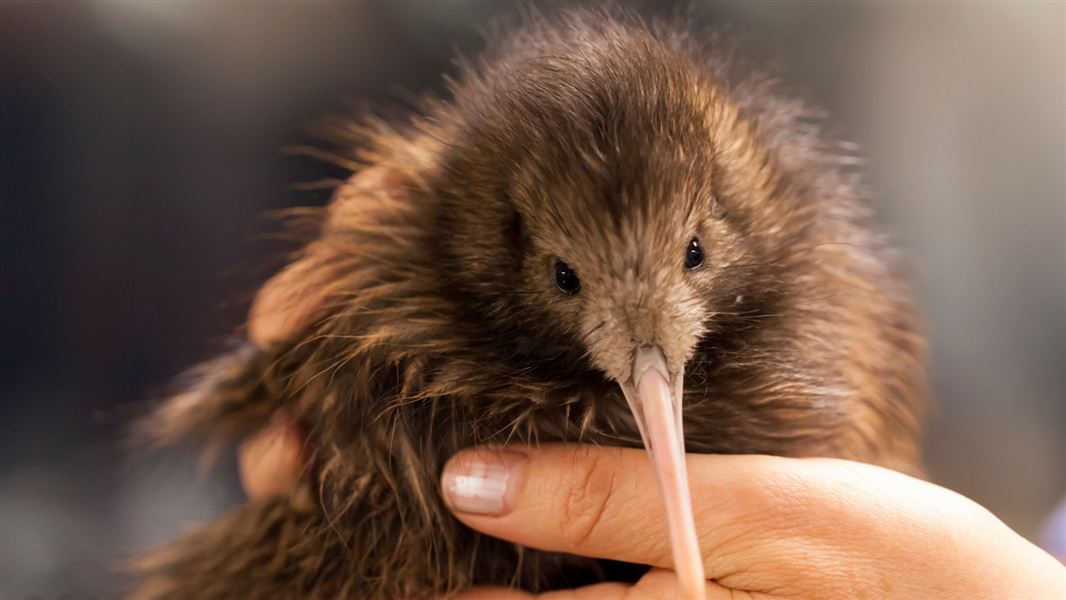Brown kiwi in decline
Brown kiwi is one of five kiwi species found in Aotearoa. The main threat to their survival is being preyed on by introduced animals. Chicks are killed by stoats and feral cats, while grown kiwi are most at risk from ferrets and dogs.
Only about 5% of brown kiwi chicks in Northland survive to become adults. Like elsewhere in the North Island, the brown kiwi population there has been in decline, but is starting to turn around with community group work to control predators.
Kiwi conservation programmes nationwide aim to reverse this decline, so all kiwi species are increasing in number.
Untrappable stoats
Trapping for stoats has improved the survival of kiwi chicks in Northland. But monitoring in the Whangārei Kiwi Sanctuary, where stoats were being trapped year-round, showed that kiwi survival had begun to decline.
Over just a few years, kiwi chick survival at Riponui Reserve dropped from a peak of 100% (of 6 chicks radio-tagged in 2002) to 0% (of 15 chicks monitored between 2005 and 2008).
Our scientists believed this was due to some untrappable stoats moving to live at this site. They knew that aerial 1080 operations kill most resident stoats through secondary poisoning, so tested the short-term use of 1080 as a way of getting rid of these problematic stoats in a series of trials in 2009 and 2010.
It’s a mystery why some stoats are untrappable. They may be shy of traps or trap boxes or simply disinterested in the baits being used.
Comparing trapping and 1080
The research involved comparing kiwi chick survival in three areas in the 9800 ha Whangārei Kiwi Sanctuary north-west of Whangārei.
Two areas (Riponui and Rarewarewa) had been trapped for more than five years. These areas had 1080 baits placed in bait stations throughout the forest (about one per hectare) for 1-2 weeks in 2009 and 2010, respectively.
Kiwi chick survival after the 1080 treatment was compared with previous years when just traps were used. It was also compared with another area (Purua) where traps alone were used.
The 1080 was used to kill rats and possums, which eat the cereal baits. Stoats die when they eat dead rats and possums.
Male brown kiwi were caught and radio-tagged to lead researchers to their nests (brown kiwi dads alone incubate the eggs). Kiwi chicks were then radio-tagged in the nest and monitored for six months.
More kiwi chicks survived
The results showed that kiwi chick survival increased after the 1080 treatment.
At Riponui chick survival increased significantly from 5% (averaged over the previous five breeding seasons) to 56%.
At Rarewarewa, chick survival went from 45% (over the previous five years) to 62%. While not a big improvement over the already good survival rate, this was significantly better than the 20% survival rate in the trapped-only area at Purua the same year.
1080 works to combat untrappable stoats
Our scientists concluded that untrappable stoats eventually build up in areas that are being trapped, which reduces chick survival over time. Use of 1080 for a short period removed these wily stoats, leading to more kiwi chicks surviving.
The use of short pulses of 1080 in bait stations to kill rats and possums, and to deal to any untrappable stoats, is now being used by community groups to benefit kiwi throughout Northland.
See the 2016 published paper: Short pulse of 1080 improves the survival of brown kiwi chicks in an area subjected to long-term stoat trapping.
